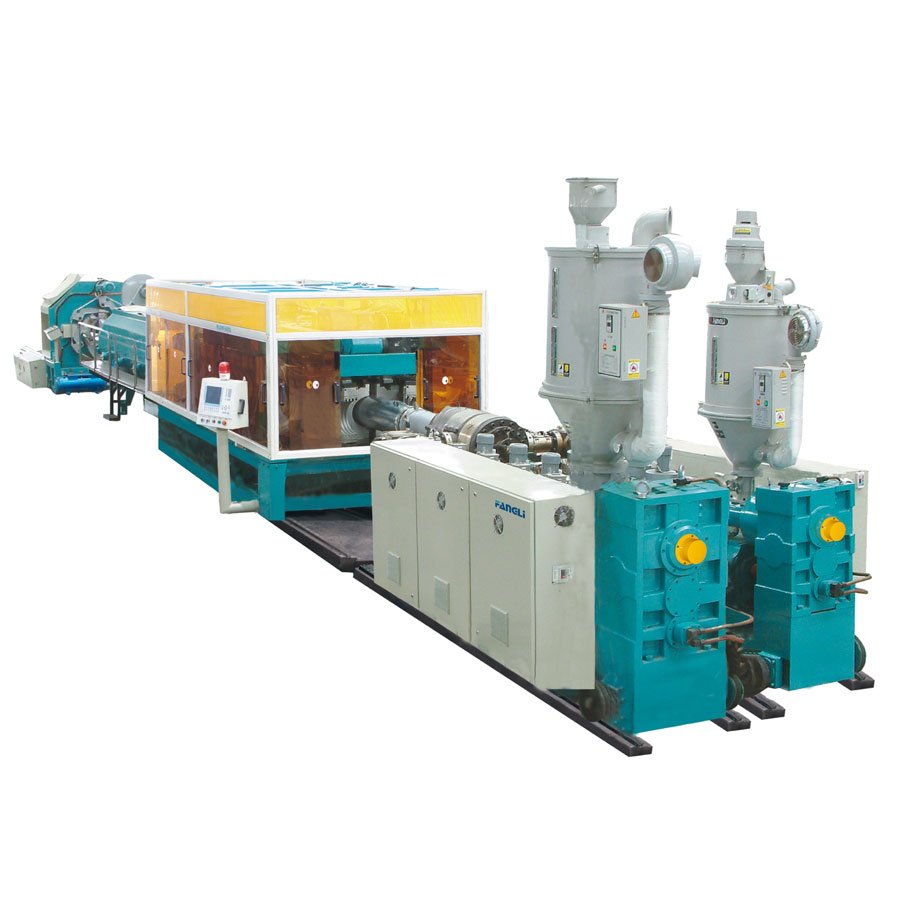Adaptable Extrusion: Can PEPP Double Wall Corrugated Pipe Equipment Accommodate Varying Diameters and Thicknesses?
2024-03-30
Introduction:
In the realm of modern manufacturing, versatility is key. When it comes to producing PEPP (Polyethylene Polypropylene) double wall corrugated pipes, the ability to accommodate varying diameters and thicknesses is crucial. This adaptability not only enables manufacturers to meet diverse customer requirements but also enhances operational flexibility and efficiency. In this blog post, we'll explore whether PEPP double wall corrugated pipe extrusion equipment can indeed accommodate varying pipe diameters and thicknesses, shedding light on the capabilities and benefits of this adaptable technology.
Understanding PEPP Double Wall Corrugated Pipe Extrusion Equipment:
PEPP double wall corrugated pipe extrusion equipment is designed to melt, shape, and form PE and PP resins into double wall corrugated pipes with superior strength, durability, and performance. This specialized equipment comprises extruders, corrugators, cooling systems, and cutting units, each playing a crucial role in the extrusion process. The equipment's design and configuration determine its ability to accommodate varying pipe diameters and thicknesses effectively.
Accommodating Varying Diameters:
PEPP double wall corrugated pipe extrusion equipment can typically accommodate a wide range of pipe diameters, ranging from small to large sizes. The extruders are equipped with interchangeable dies or mandrels, allowing for quick and easy adjustment of the pipe diameter. Additionally, the corrugator's design often features adjustable forming blocks or molds, enabling manufacturers to produce pipes with different corrugation profiles and diameters. This versatility ensures that manufacturers can meet specific customer requirements and adapt to changing market demands efficiently.
Handling Varying Thicknesses:
Similarly, PEPP double wall corrugated pipe extrusion equipment is capable of producing pipes with varying wall thicknesses to suit different applications and performance requirements. The extrusion process allows for precise control over material flow rates, extrusion temperatures, and die configurations, enabling manufacturers to achieve uniform wall thicknesses across the length of the pipe. Advanced extrusion equipment may feature thickness monitoring and control systems to ensure consistent product quality and dimensional accuracy. By adjusting process parameters and tooling configurations, manufacturers can produce pipes with thin or thick walls, catering to a wide range of applications.
Benefits of Adaptability:
The adaptability of PEPP double wall corrugated pipe extrusion equipment offers several benefits for manufacturers and end-users alike. Firstly, it enables manufacturers to streamline production processes and reduce setup times by eliminating the need for dedicated equipment for each pipe diameter or thickness. Secondly, it enhances operational flexibility, allowing manufacturers to respond quickly to changing market demands and customer requirements. Additionally, the ability to produce pipes with varying diameters and thicknesses expands the range of applications for PEPP double wall corrugated pipes, making them suitable for a diverse array of infrastructure and construction projects.
Conclusion:
In conclusion, PEPP double wall corrugated pipe extrusion equipment is capable of accommodating varying pipe diameters and thicknesses, thanks to its adaptable design and configurable components. This versatility empowers manufacturers to produce high-quality pipes tailored to meet specific customer needs while enhancing operational efficiency and flexibility. As the demand for durable and versatile piping solutions continues to grow, the adaptability of PEPP double wall corrugated pipe extrusion equipment remains a cornerstone of modern manufacturing, driving innovation and sustainability in the construction industry.



